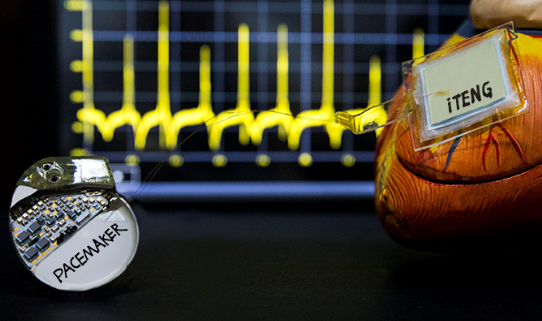Media Release
From: Springer NatureBiomedical engineering: A self-powered pacemaker in pigs
A battery-free device that harvests energy from heart beats to power a cardiac pacemaker is reported in Nature Communications this week. The implantable device, demonstrated in adult pigs, was also capable of correcting sinus arrhythmia (an irregularity in the heart rhythm).
Current pacemakers and other implantable medical devices are powered by batteries that are bulky, rigid, and short-lived. Implantable, self-powered energy harvesters can be used for physiological regulation; however, they have only been demonstrated in small animal and cell models with low energy demands.
Zhou Li, Zhong Lin Wang and colleagues developed an implantable generator that can harvest enough energy from cardiac motion to power a commercial pacemaker. The energy harvester, which is paired with a power management unit and the pacemaker, is biocompatible and mechanically durable. The authors demonstrated in pigs that their implanted system was not only capable of cardiac pacing, but could also correct sinus arrhythmia and prevent deterioration to conditions (such as sinus arrest and ventricular fibrillation) that may lead to death.
Although the system cannot be extended to humans until the size, efficiency, and long-term biosafety are optimized, the energy harvested from each cardiac cycle was higher than that needed for pacing in humans. The authors suggest that the technology could have a range of applications, including in tissue engineering, nerve regeneration, and stem cell differentiation.


